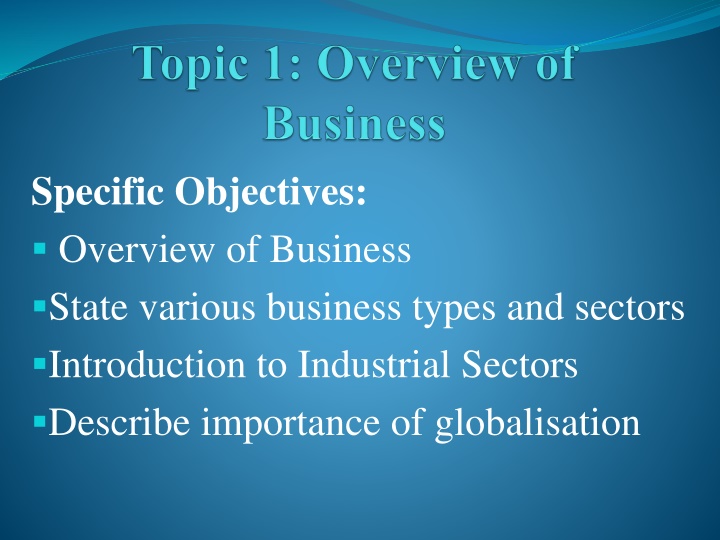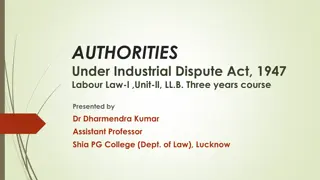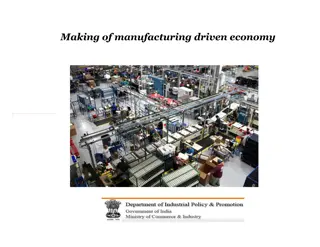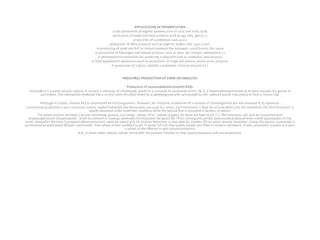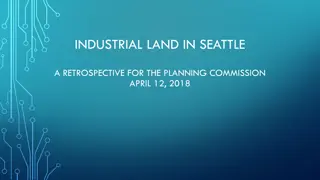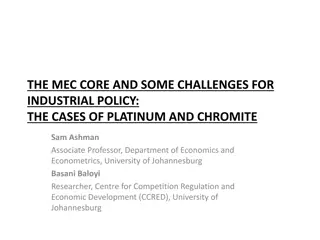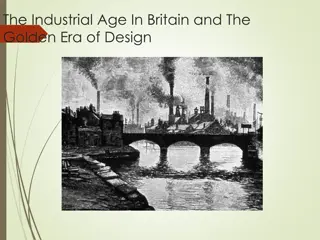Overview of Business State and Industrial Sectors: A Comprehensive Guide
Dive into various business types and sectors, exploring the significance of globalization. Understand the management aspects, role of a Diploma Engineer, quality improvement techniques, safety protocols, industrial finance processes, and latest trends. Learn about business organization concepts, factors affecting new businesses, market competition, and government regulations. Delve into key areas like human resources, marketing, finance, and production operations with a focus on manpower planning, job analysis, market research, and financial advice.
Download Presentation

Please find below an Image/Link to download the presentation.
The content on the website is provided AS IS for your information and personal use only. It may not be sold, licensed, or shared on other websites without obtaining consent from the author.If you encounter any issues during the download, it is possible that the publisher has removed the file from their server.
You are allowed to download the files provided on this website for personal or commercial use, subject to the condition that they are used lawfully. All files are the property of their respective owners.
The content on the website is provided AS IS for your information and personal use only. It may not be sold, licensed, or shared on other websites without obtaining consent from the author.
E N D
Presentation Transcript
Specific Objectives: Overview of Business State various business types and sectors Introduction to Industrial Sectors Describe importance of globalisation
Get familiarized with the environment related to business processes. 2) Know the management aspects of the organisation. 3) Understand role and responsibilities of a Diploma Engineer. 4) Understand importance of quality improvement techniques. 5) Appreciate need and importance of safety in industries. 6) Understand process of Industrial finance and its management. 7) Know the latest trends in industrial management. 1)
Concept of Business Organization Afirm is an ownership organization which combines the factors of production (men, material and machines) in a plant for the purpose of producing goods or services and selling them at profit.
1. Size and nature of the business to be started. 2. Technical Difficulties. 3. Market Competition and scope of the articles in the market. 4. Capital required to start the business and means to collect the funds.
5. Limitations and restrictions put forth by the Government in connection with grant of loans, foreign exchange and such other things.
1. Human Resources 2. Marketing 3. Finance 4. Production (Operations)
1. Manpower Planning 2. Job analysis and Job description 3. Determining wages and salaries 4. Recruitment and Selection 5. Training and Development 6. Employee welfare and motivation 7. Labour management relations 8. PerformanceAppraisal
1. Conducting Market Research 2. Price Planning 3. Customer Relationship Management 4. Identifying New Business Opportunities 5. Product Planning 6. Distribution Planning 7. ConsumerAnalysis
1. Advice on the financial and tax implications of business decisions 2. Management of wages 3. Raising Finance 4. Preparation and annual budgets and forecasts monitoring of
1. Production and planning 2. Purchasing department 3. Stores department 4. Manufacture of products 5. Design and department technical support
Private Enterprises 1. Individual Ownership 2. Partnership 3. Private Limited Company
1. Housing Co-operative Society 2. Consumers Co-operative Society
1. Government Department 2. Government Company
The a by Business Units. For example: delivery of financial services to Customers of a bank, or goods to the Customers of a retail store. Successful delivery of Business Services often depends on one or more IT Services. The typical service business provides intangible* products, such as accounting, banking, landscaping, education, transportation services. (Not physically touched) term Business that Service delivered is to also Business used to mean Service is Customers consulting, cleaning, insurance, treatment &
A business that uses components, parts or raw materials to make a finished good. These finished goods can be sold directly to consumers or to other businesses that use them for making a different product. manufacturing business is any manufacturing
Small Manufacturing Business Ideas Manufacturing of Paper. Manufacturing of paper is a low-cost business idea. ... Manufacturing of Folder File and Envelopes. ... Soap and detergent manufacturing. ... Hair Oil Production. ... Manufacturing of Sports related items. ... Handmade Biscuit making. ... Candle making. ... Ball pen Refill making
Trade: Trade is a basic economic concept involving the buying and selling of goods and services, with compensation paid by a buyer to a seller, or the exchange of goods or services between parties. . An example of trade is the act of exchanging one item for another or one item for money. Some specialized trade jobs, such as welder, require certification and can pay very well.
Industrial sector Introduction: Industries plays an important role in growth and development of a nation. Development refers to- Increase in number of industries. Increase in industrial production. Improvement in technology. The industrial sector of the economy is one that make finished products which can then be utilized viz. construction and manufacturing industry. Industrial sector is also known as secondary sector.
It is through industrialization that resources of country can be utilized properly. It leads in higher growth rate even than agriculture. JAWAHARLAL NEHRU also called the industries the modern temples of India
Examples of Industrial Sectors: Engineering Industry Process Industry Textile Industry Chemical Industry Agro Industry IT Industry Banking, Insurance, Retail, Hospitality, Health Care
Engineering Industry Industrial engineering is a branch of engineering which deals with the optimization of complex processes, systems, ororganizations. Industrial engineers work to eliminate waste of time, money, materials, person-hours, machine time, energy and other resources that do not generate value. According to the Institute of Industrial and Systems Engineers, they create engineering processes and systems that improve quality and productivity. Industrial engineering is concerned with the development, improvement, and implementation of integrated systems of people, money, knowledge, information, equipment, energy, materials, analysis and synthesis.
Process Industry Process manufacturing. ... Process manufacturing is common in the food, beverage, chemical, pharmaceutical, consumer packaged goods, and biotechnology industries. In process manufacturing, the relevant factors are ingredients, not parts; formulas, not bills of materials; and bulk materials rather than individual units
Textile Industry The textile industry is primarily concerned with the design and production of yarn, cloth, clothing, and their distribution. The raw material may be natural, or synthetic using productsof the chemical industry.
Chemical Industry The chemical industry comprises the companies that produce industrial chemicals. Central to the modern world economy, it converts raw materials (oil, natural gas, air, water, metals, and minerals) into more than 70,000 different products.
Agro Industry Industry connected with Agriculture the large_scale production, processing, and packaging of food using modern equipmentand methods.
IT Industry, Banking, Insurance, Health Care, Hospitality
Globalization: Globalization is a process of economic, political and cultural unification. integration and Globalization involves many countries and majorityof hugeenterprises.
The organizations develop international influence or start operating on an international scale. process by which businesses or other Globalization is the increasing interaction of people, states, or countries through the growth of the international flow of money, ideas, and culture. Globalization is primarily an economic process of integration that has social and cultural aspects. It involves goods and services, and the economic resources of capital, technology, and data.
Questions.. 1) ------- means integrating the economy of a country with global/world economy. Globalization Liberalization Privatization L-P-G
2) The goals of Enterprise are fulfilled through the use of resources like Man Machine Material All of Above
3) Globalization icreases Employment opportunity Foreign Investment Competition All of above
